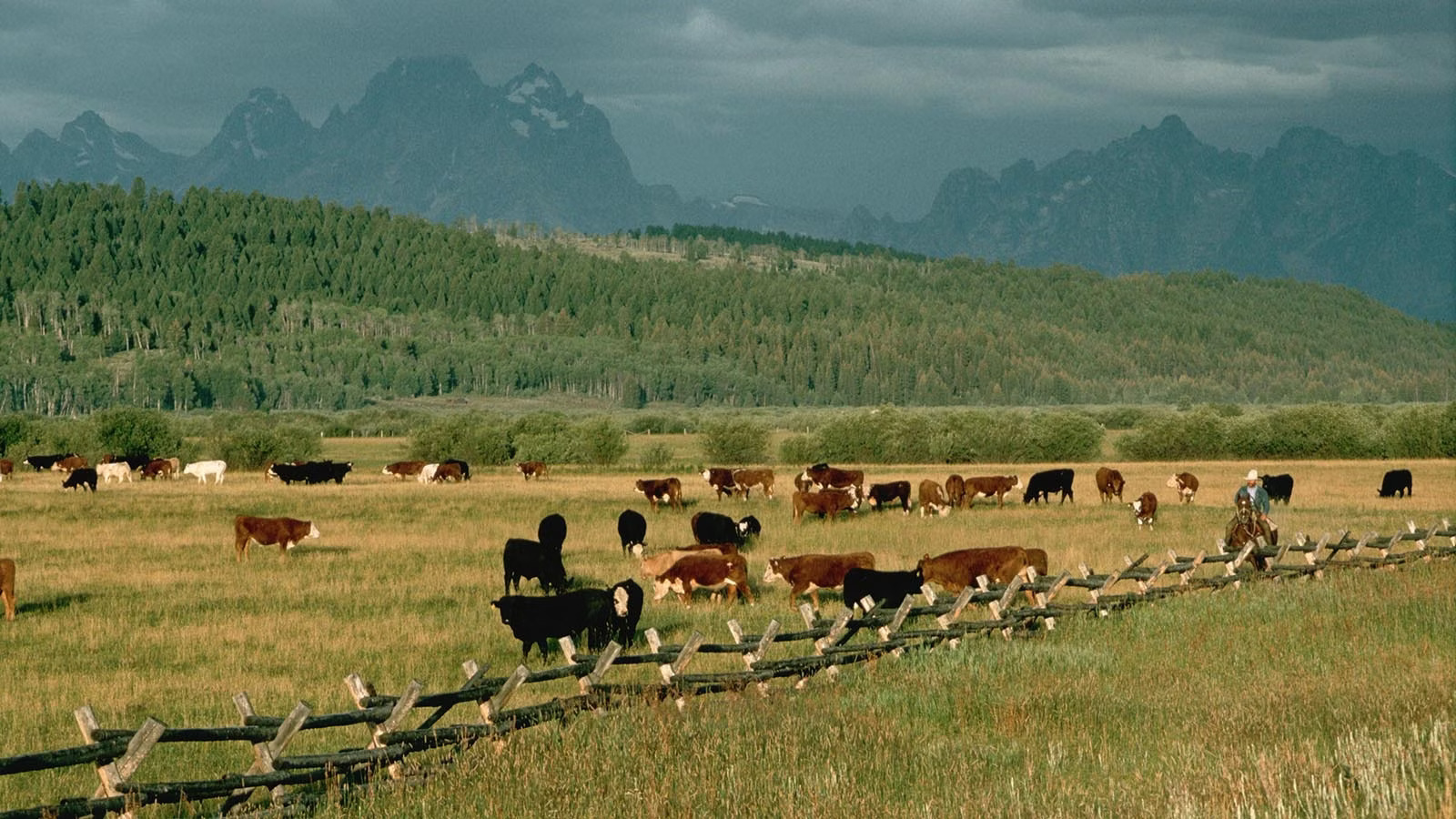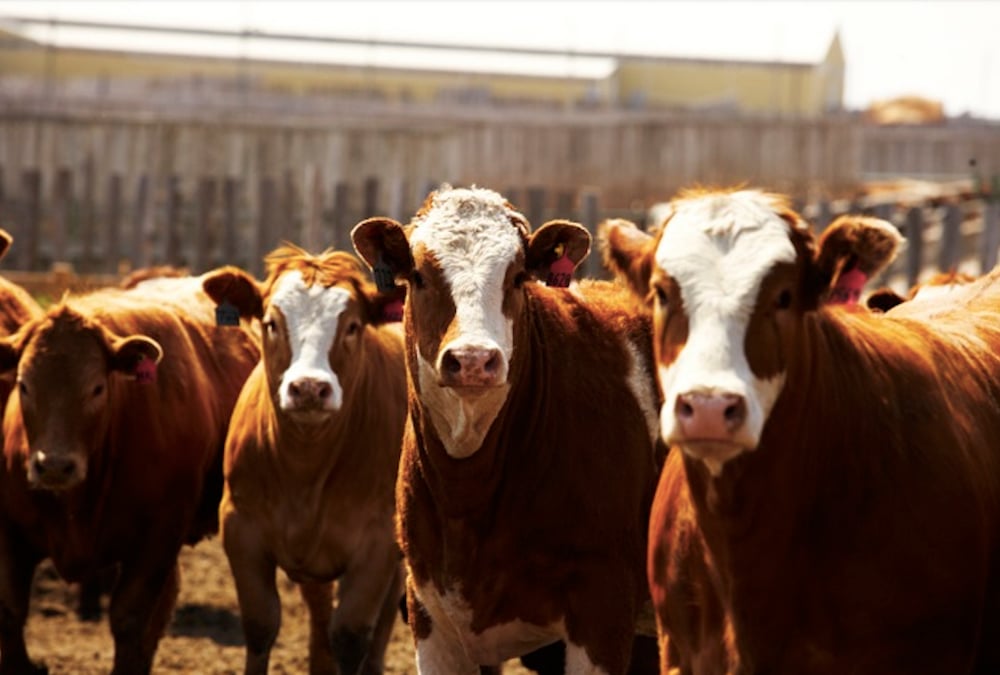An anthrax outbreak has killed at least 50 cattle in the Elk Mountain area of Carbon County, Wyoming, marking the first confirmed case of the deadly bacterial infection in Wyoming cattle since the 1970s.
Additionally, the infection has been found in a moose in the same region, representing the first detection of anthrax in Wyoming wildlife since 1956.
The Wyoming State Veterinary Laboratory confirmed the anthrax diagnosis on August 31, reporting that cattle from several herds near Elk Mountain tested positive for the disease.
“We have approximately 50 to 60 cattle that have died so far due to anthrax,” Wyoming State Veterinarian Dr. Hallie Hasel told Cowboy State Daily on Wednesday.
“It’s confined to a localized area for now, but we are continuing to investigate, and there may be other losses we haven’t yet identified.”
The full scope of the outbreak remains unclear, but anthrax poses a serious risk to livestock, wildlife, and people in the affected area. Hasel urges residents near Elk Mountain to take precautions against potential exposure.
“Anthrax is a zoonotic disease, meaning it can be transmitted between animals and humans,” Hasel said. “Anyone who suspects they have been exposed to a carcass of an animal—whether it be cattle, horses, moose, or deer—that may have died from anthrax should immediately contact the Wyoming Department of Public Health or their healthcare provider.”
Anthrax is a naturally occurring organism in Wyoming’s soil, often lying dormant for decades. Outbreaks occur under specific environmental and meteorological conditions, which Hasel believes may have been triggered by recent weather patterns in Carbon County.
“We’ve had a period of drought followed by heavy rainfall,” she said. “This combination is likely what caused the outbreak in this particular area.”
Symptoms of anthrax infection include weakness, staggering, labored breathing, fever, and bloody diarrhea. In severe cases, sudden death can occur. Hasel cautioned that the current outbreak could affect more than just cattle.
“It’s not limited to cattle,” she said. “Other livestock and big game wildlife could also be impacted. If anyone notices any of these signs or sudden unexplained deaths, they should contact their veterinarian or the Wyoming Livestock Board right away.”
A moose carcass found in the same area as the cattle was also confirmed to be infected with anthrax, according to Wyoming Game and Fish Director Brian Nesvik, who spoke with Cowboy State Daily earlier on Wednesday.
It is unclear how the moose contracted the infection, but Nesvik noted that the spores could have been present in the environment, as anthrax spores can persist in the soil for years.
This marks the first confirmed case of anthrax in Wyoming wildlife since a 1956 outbreak, when a moose carcass in Sublette County tested positive.
While investigations by the Wyoming Livestock Board and the Wyoming State Veterinary Laboratory continue, Hasel stated that all confirmed cases have so far originated from a “localized region.”

Due to the nature of anthrax, there is currently little concern that the outbreak will spread beyond Carbon County.
“Anthrax outbreaks typically occur in regions with similar geographic conditions, but we don’t yet know the full extent of the affected area,” Hasel said. “It doesn’t generally spread between herds, but any cattle grazing in that area could be at risk. The spread is usually minimal.”
One contributing factor to anthrax outbreaks is the type of soil where they occur. Hasel explained that outbreaks often happen in regions with highly alkaline soil, which can extend the lifespan of anthrax spores, though they can also occur in areas with lower alkaline content.
Hasel added that the duration of the outbreak will depend heavily on weather conditions. Based on current data from Carbon County, the outbreak began about three weeks ago and could continue until the weather changes.
“A significant shift in weather might reduce contamination and cause the spores to become dormant again,” she said. “We can’t predict how long the outbreak will last—it all depends on the weather and soil conditions.”
Ranchers in Carbon County concerned about the risk of anthrax in their herds have an effective solution: vaccination. Hasel encourages all ranchers to contact their veterinarians about vaccinating their cattle against anthrax.
“There is a highly effective vaccine available for livestock,” Hasel said. “Once producers start vaccinating, even in successive years, the losses are significantly reduced as long as the livestock are protected.”
Unfortunately, many ranchers in Carbon County had not vaccinated their herds before the outbreak, which heightened the risk of losses.
“They hadn’t vaccinated because they weren’t aware of any imminent risk,” Hasel explained. “Now that they are, we hope they’ll incorporate this into their routine vaccination protocols.”
Since anthrax is a zoonotic disease, Hasel warns that it can spread from infected livestock and wildlife to humans. She urges ranchers and residents to avoid contact with any carcasses or animals suspected of being infected.
“Anyone who believes they’ve been exposed to a carcass that may have died from anthrax should immediately contact the Wyoming Department of Public Health or their healthcare provider,” she advised. “And under no circumstances should they attempt to open or move the carcass.”
If someone encounters dead or potentially infected livestock or wildlife, the best course of action is to report the situation to the Wyoming Livestock Board, Wyoming Game and Fish, or the Wyoming State Veterinary Laboratory.
As of Wednesday, it remains uncertain how long the outbreak will persist or when future outbreaks might occur. Hasel emphasized the importance of preparedness, urging ranchers to vaccinate their herds to ensure resilience.
“Anthrax is unpredictable, but once you know it’s present in an area, you can plan ahead,” she said. “This may be the first anthrax outbreak since the 1970s, but it could reappear next year—or it might not surface again for a decade. The future is unknown.”
